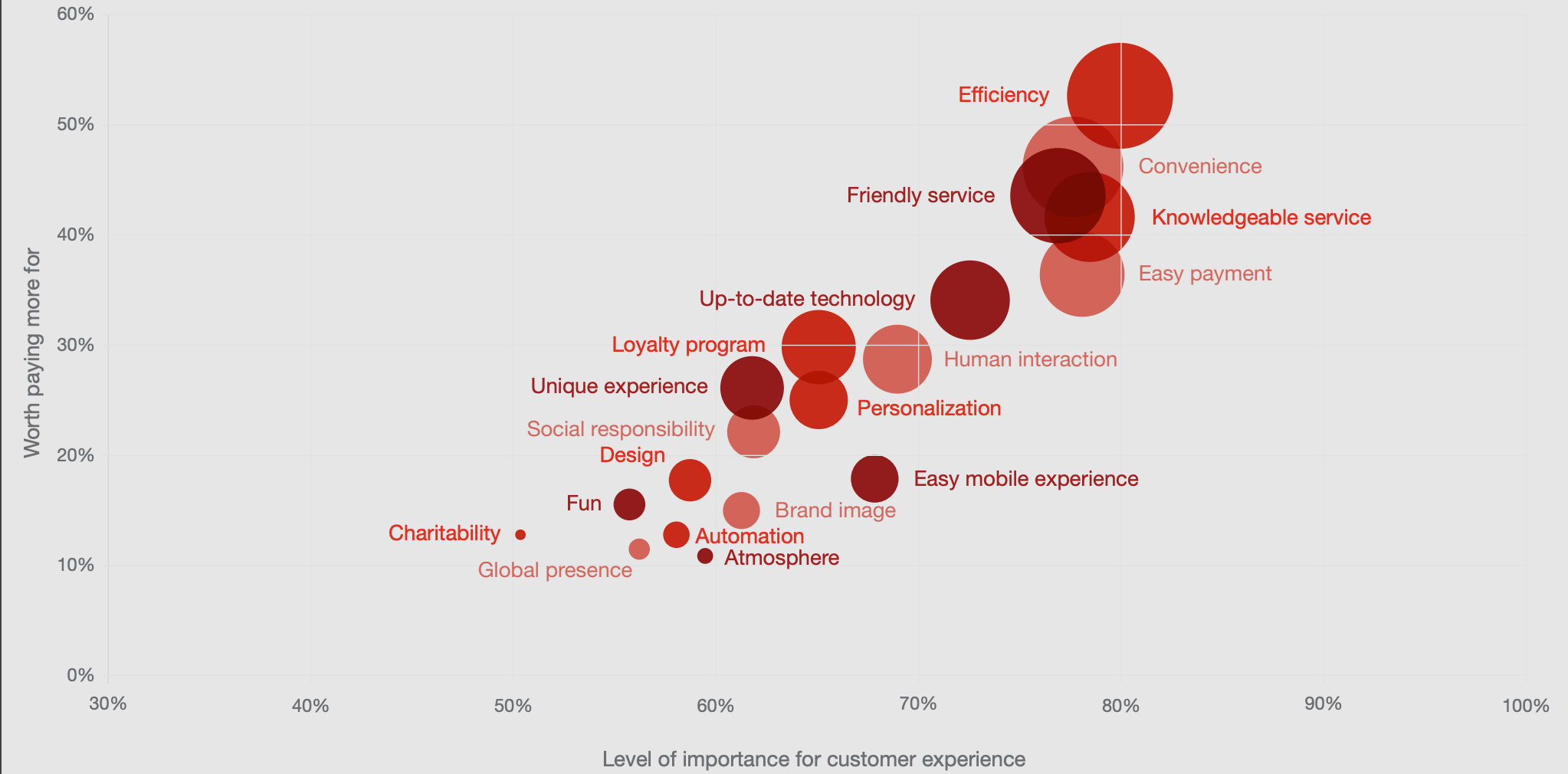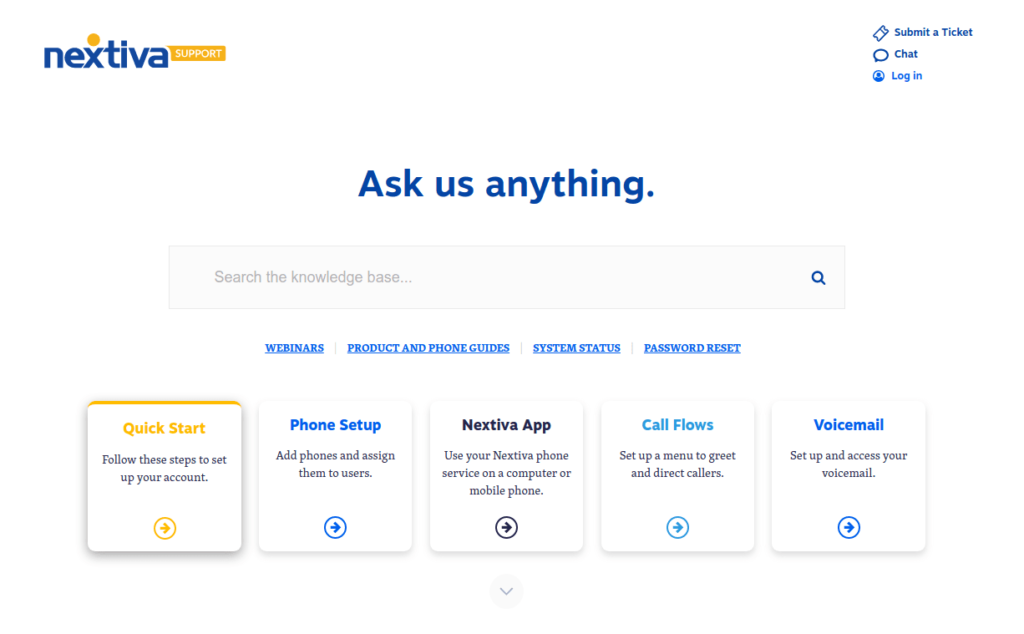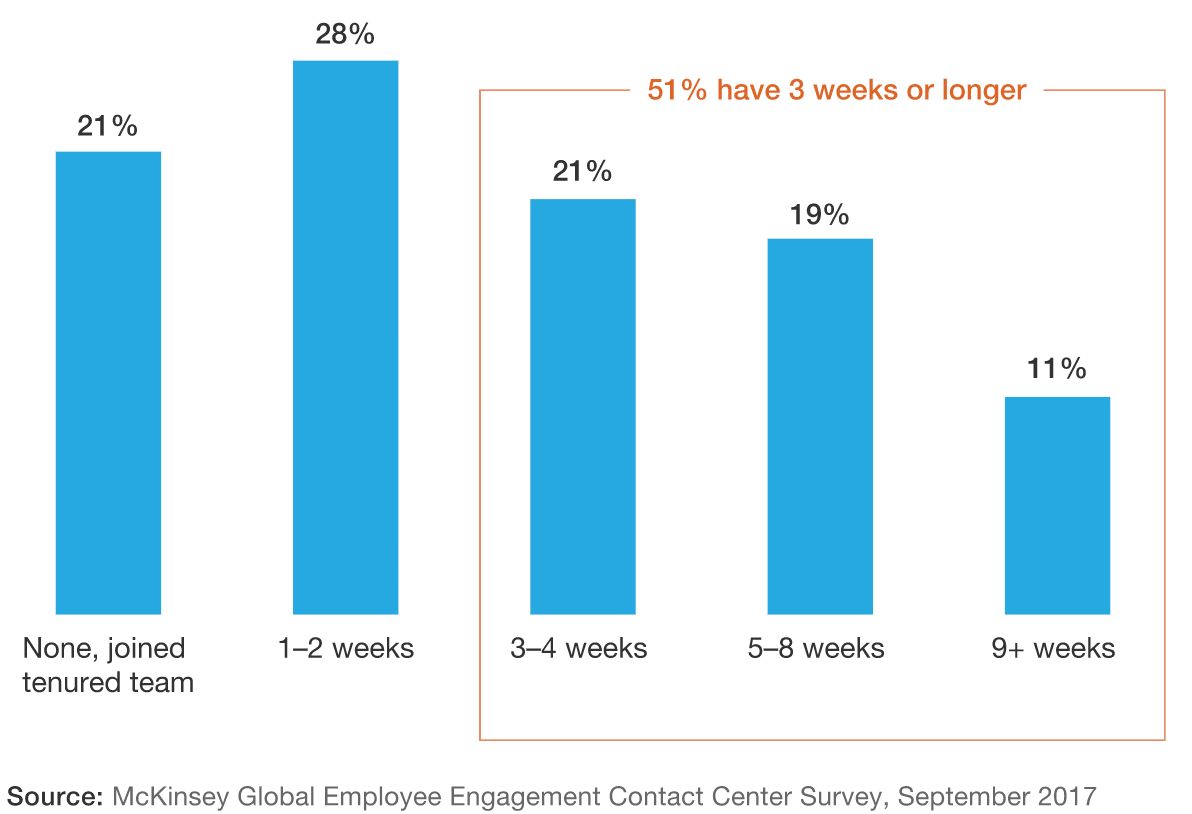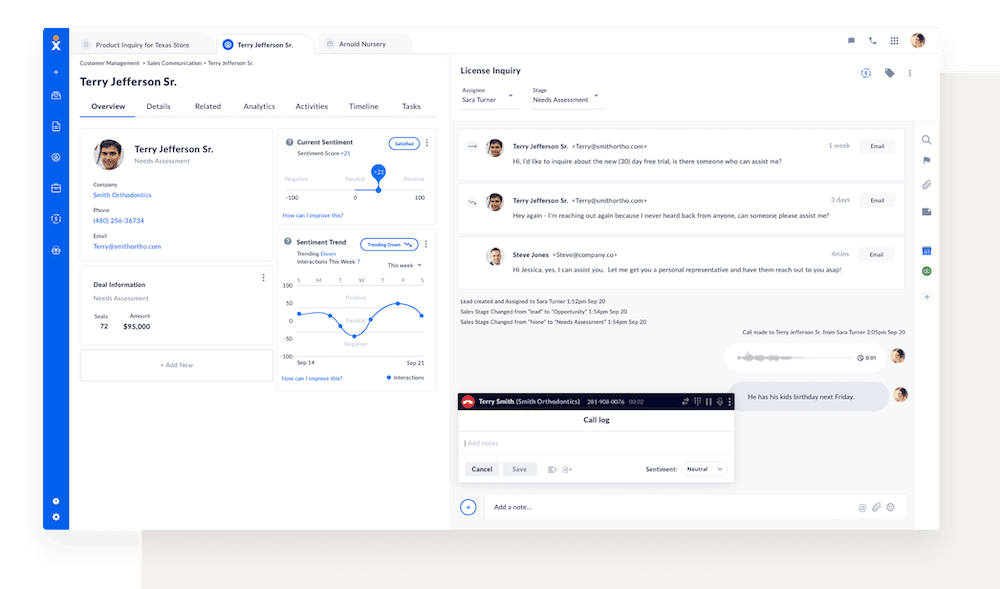25 call center best practices for superior customer experiences

Table of Contents

Delivering exceptional customer service today is much more than answering customers’ questions and resolving their issues. Customer service can be a pivotal differentiator distinguishing your business from the competition when leveraged correctly.
Customer service today comes in several forms – phone calls, live chats, emails, support tickets, etc. However, a virtual call center is the most common and efficient way to provide customer support at scale.
By making customers feel heard and valued, good customer service can convert even the most casual customers into happy advocates and promoters. This, in turn, can significantly improve your Net Promoter Score (NPS), revenue goals, brand perception, and more.
As per a recent PwC study, more than 75% of consumers worldwide want more human interaction at all stages of the brand experience. Though virtual call centers fulfill this criterion, incorporating call center best practices into your customer service strategy can help your business go that extra mile to delight customers.
Call center best practices to boost customer experience
With a series of small changes, you can infuse customer-centricity into your customer service strategy and transform your call center into a valuable business driver. Use these best practices for incremental improvements across multiple processes.
Here are the best ways to improve call center customer experience
- Obsess over customer experience
- Build a cohesive company culture
- Choose reliable solution partners
- Expand real-time omnichannel support
- Scale your customer service team with VoIP
- Hire for attitude over aptitude
- Reward your team with the right incentives
- Empower your customer service agents
- Build a knowledge base
- Track the metrics and KPIs that matter
- Set up rigorous quality assurance
- Craft a bullet-proof redundancy plan
1. Obsess over the customer experience.
To deliver the best customer experience, your team needs to be customer-obsessed. They must keep the customer at the center of all decision-making, empathizing with their problems to deliver the best solutions.
The golden rule still applies – Do a customer wrong, and they won’t come back. Beat their expectations, and they become a reliable source of revenue for years.
This is especially true for modern buyers, who research products, read reviews and form their opinion about your business based on these inputs. They also expect immediate service, which your competitors are more than willing to provide.
That’s why your call center should always provide end-to-end customer experience; support should be available to customers at all stages of their journey, right from the moment they visit your site to getting the most use out of your product. Going the extra mile can significantly increase customer lifetime value.

2. Build a cohesive company culture
Business is truly global today. Distributed, diverse teams cater to customers around the world. The only way to ensure a consistent brand experience for all customers is a cohesive, unique company culture that every employee lives and breathes.
Internally, a great company culture encourages employees to align personal performance with business goals and stay motivated to deliver more. Productivity and ownership, too, improve with good culture, turning happy employees into ambassadors that attract great talent in the future.
Though intangible and often overlooked, a conducive company culture that prioritizes employee growth and well-being is one of the most important incentives for employees. It drives employees to give their best, while also ensuring customers receive expected levels of support and service even when your business scales and expands into newer geographies.
But culture isn’t built overnight. Call center management teams must invest time, effort, and thought into crafting a culture that inspires employees to work towards a shared purpose with zeal.
3. Choose reliable solution partners
For any business to succeed, it needs to team up with the right service providers. Especially for a call center, choosing a business communications collaboration software or a telephone service company that understands your needs and has capabilities to support your scale is important.
This is why the most successful brands around the world trust Nextiva. Built on the idea that all businesses deserve better technology, Nextiva provides cloud-based communication, telephone, and other technology services to over 150,000 businesses.
Teach your call center system new tricks.
Move to the cloud and be amazed!
4. Expand real-time omnichannel support
Our world is intricately connected today. People use an average of four different devices every day and a number of communication channels. Your call center should therefore be able to provide omnichannel support, evolving into a contact center to deliver efficient, effective, and timely resolution.
Customers should be able to reach your contact center from any device, be it a cell phone, tablet, laptop, or desktop computer. Agents in contact centers should also be able to respond to queries via email, text, social media channels, etc., with unified communication tools to ensure better customer satisfaction and engagement levels.
5. Scale your customer service team with VoIP
Cloud technology is the best solution when it comes to achieving scale quickly. With a cloud phone system, your customer service team is no longer geographically restricted; they can work from anywhere, round the clock.
Most of these systems come with specific Voice over Internet Protocol (VoIP) phone numbers. VoIP phone numbers let you speak with customers using any internet-connected device. And you can do it for a fraction of the cost of a landline.
This also eliminates overheads and costs like office space rentals and maintenance or setting up expensive Private Branch Exchange (PBX).
With VoIP, your call center can be up and running relatively quickly and at a competitive price. Your agents just need a VoIP app on their computers or smartphones to get started.
VoIP can be purchased for a monthly fee that covers an unlimited number of phone calls between agents. There is no extra cost for international calls too.
Whether you can or can’t teach someone to be friendly and empathetic is a nature vs. nurture debate. But you can surely hire candidates that already possess those attributes.
Another interesting perspective is looking for candidates with the ability to teach effortlessly. Or those who can adapt and improvise amiably no matter the problem or situation thrown at them.
A customer service staffer lacking compassion won’t last long. Call center knowledge can be taught, but attitudes are less malleable. Past experience
7. Reward your team with the right incentives
When your team is crushing goals, reward them as a token of appreciation and gratitude. It makes them feel valued and motivates them to aim higher.
Make sure you’re tracking individual and team-based performance. This way, you’re rewarding behavior based on numbers alone. A few of the top customer service metrics include:
- Average Handle Time (AHT)
- First-Call Resolution Rate
- Customer Satisfaction Rate
- Compliance/Quality Scores
- Customer Retention/Revenue Rates
These metrics should be realistic and influenced by individual agent behavior. Make the rules of engagement clear and give them goals to achieve. Reward them with fun, relevant, and generous rewards for high performance.
But beware of making the rewards too lucrative. Sizable rewards may be grounds for cheating or manipulating stats, so keep that in mind. Instead, look beyond financial rewards and incentivize the team with personal recognition, team events, and paid time offs.
8. Empower your customer service agents
Employees who feel valued tend to be more engaged and motivated at work. They take ownership of their roles and assume responsibility for business results. That leads to more productivity and innovation, boosting performance.
Give agents a voice in the decision process for issues that affect them. Look to them as experts in the field. Empower agents to act in favor of the customer without needless escalations.
Make it rewarding for your team to provide excellent support. Examine your total compensation to drive loyalty and employee engagement.
9. Build a knowledge base
As your team grows and your processes become more complex, knowledge management will become a challenging task. Most companies store their internal documentation in a knowledge base or wiki. These knowledge bases assist customers and employees by monitoring potential call drivers.

But a knowledge base is of no use if it’s not regularly updated or easily searchable. You might want to consider tapping a member or two of your customer service team to keep it current.
Here are a few tips to keep your knowledge base in tip-top shape:
- Update your titles and descriptions so they are easily searchable
- Include GIFs or videos to show steps and solutions
- Audit the necessity of support articles with minimal traffic
- Examine high-traffic articles for accuracy and best practices
10. Track the metrics and KPIs that matter
Not all metrics are equal; some are more valuable than others. You don’t need to watch every number. Doing so might also lead to analysis paralysis.
Your team should identify Key Performance Indicators (KPIs) that align with your business objectives. Some call centers don’t need to worry about call time when it’s revenue that counts. For others, the average handle time might be critical.
The set of key metrics that apply to your company will depend on many factors but here are useful call center metrics you should consider:
- Issue type
- Call volume
- Abandoned calls
- Customer satisfaction
- Average wait time
- After-call work
- Resolution rate
- Turnover rate
Related: 33 call center metrics to track your customer satisfaction
11. Set up rigorous quality assurance
There’s no perfect call center operation. But that’s not to say you should avoid striving for the ideal customer experience.
Even with impeccable metrics, your call center could be going rogue. Or worse, such as falling out of compliance with laws and regulations.
Tap into some of your rising stars to review recorded calls and score them. This process is known as quality assurance. Share those insights with a call center agent’s manager for kudos or coaching.
Another way to improve is by holding regular, post-mortem performance assessments. Do this every month or quarter, focusing on what your team did well, and which areas they need to improve.
You can also gather customer feedback as much as and as often as possible. This information allows you to have a well-rounded view of customer sentiment.
12. Craft a bullet-proof redundancy plan
Unpredictability and uncertainty in business are nothing new. A number of seemingly small incidents can cause your call center team to be unavailable. An internet outage, severe weather, or health advisories. Creating a backup plan or a business continuity plan for such inevitabilities is the best way to tackle the challenge and plan for workarounds.
Educate your team about such contingencies. Avoid dead-ends when you route calls to a voicemail. Cloud-based call center software can transcribe messages and email them to your team. You can also forward calls to personal cell phones, so they don’t go unanswered.
It’s essential to have a process for business as usual during unforeseen circumstances. It will also help you find a business phone system or VoIP with features specific to your requirements such as call queues and analytics.
Related: How to Create & Implement an Effective Business Continuity Plan
Call center training best practices
Proper onboarding and regular training are key ingredients for call center success. It equips your team to handle customers better, resolve issues faster, and deliver customer satisfaction like never before.
Call center training best practices are:
- Use the best contact center tools
- Invest in training new call center agents
- Provide frequent call center training
- Supplement training with cloud-based technology
- Mystery-shop your team for continuous improvement
1. Use the best contact center tools
To ensure you get the best output from your team, you have to provide them with the best tools in a safe, collaborative work environment.
Today, software and services to support the day-to-day operations of a call center are evolving rapidly. Many sophisticated options for call center phone systems with advanced features like auto attendants, call recording, softphones, and CRM are readily available.
Evaluate and implement the best option to suit your call center and your team’s needs. Empower and equip your team to focus on their core job – engaging with customers and providing exceptional customer experiences.
Ditch your unreliable CX tools.
Crush your goals with the contact center top enterprises trust.
2. Invest in training new call center agents
For your customers, your call center represents your company. Your agents are important touchpoints for the customer, and how the interaction progresses often decide how the customer feels about your company.
Any business, call centers included, has a steady flux of new employees. As luck would have it, sometimes irate customers get connected to new employees who might not know how to handle the query, resulting in a bad impression for the customer and dampened morale for the new agent.
To avoid this, design a thorough onboarding plan for new call center employees. Cover topics that are unique to your company. Include your values, vision, and specific use cases. Go even further by playing your best and worst recorded calls so the new agent gets a full flavor of the job and the potential customers they will be dealing with.
With thorough training, you can dramatically increase your new call center agents’ productivity and get them a proper headstart. By keeping your staff’s skills sharp, you can adequately equip them to handle the routine tasks they’ll do in their role as a customer support agent.
Once they begin taking calls, continue training with additional materials:
- Use call recordings to review handling difficult situations.
- Provide screen-sharing videos on using their call center software.
- Save your call center best practices in a shared document.
Thorough onboarding and regular training are extremely important in the call center context, which explains why they top the list year after year for call center best practices.

3. Provide frequent call center training
Customers expect your support team to be knowledgeable about your product or service, and, as an extension, the solutions to their queries. You can deliver this by regularly training your agents. Products and services evolve rapidly today, so conducting regular refreshers can help agents consistently resolve issues quickly.
If your agents have in-depth knowledge about the most frequent issues, they are less likely to place customer calls on hold, which is known to annoy even the most patient customers. Regular training and resources like articles, quick reference guides, videos, etc. can help your team accentuate soft and hard skills crucial to call center success. This includes active listening, product knowledge, escalation matrix, documentation techniques, etc.
4. Supplement training with cloud-based technology
Call center teams deal with unique customers and peculiar problems day in and day out. They face new challenges every single day, which initiates a continuous learning loop.
With the right support, guidance, and tools, continuous improvement can become a part of the call center’s DNA, creating a positive impact on all processes and people.
Using cloud-based technology, managers can measure performance and review all customer interactions to provide actionable feedback to the team. These insights can also become the seed for new training opportunities or process improvements. For instance, managers can:
- Identify the most compelling scripts and techniques for a given type of customer
- Share specific training tips that yield the best results
- Help the team improve call quality and individual performance
Regardless of which tools you’re using, be strategic with your data. It’s easy to get overwhelmed with metrics. Connect the expected outcome of every training process to a KPI or business goal.
5. Mystery-shop your team for continuous improvement
Businesses get more complicated as they grow. Sometimes, a few aspects of quality can be accidentally overlooked in favor of quicker resolutions or customer appeasement. One way to spot-check quality is through the concept of mystery shopping.
Mystery shopping means you are auditing the customer experience without revealing your intentions. It eliminates any biases created when helping out a known employee.
Auditing your experience as a customer can yield unexpected insights. The two most popular ways to go about mystery shopping are:
- Leadership mystery shops. Have your call center leaders call using a virtual phone number and log interactions. Using a scoresheet ensures that evaluations are fair.
- Customer panel. Consider creating a customer panel to provide you insight into the customer experience. Sometimes, hearing directly from customers cuts through all the noise.
The goal of a mystery shop isn’t to catch wrongdoing. It is an efficient tool for discovery, helping you identify if there are isolated gaps or companywide misalignments.
Related: How to use call center reports to improve customer experience
Call center script best practices
A well-crafted, well-thought-out script is essential for consistent, uniform customer interactions at any call center. In addition, scripts for all sorts of customer issues and resolutions will help your agents deliver quick and effective solutions, improving customer experience significantly.
Though the script’s content and style might vary from one call center to another, keep the following best practices in mind when crafting scripts:
- Balance technology with the human touch
- Split-test your call center scripts
1. Balance technology with the human touch
Though chatbots and IVRs that use artificial intelligence (AI) and natural language processing (NLP) have become easier to deploy today, they are often counterproductive. They get in the customer’s way of getting the help they need.
After years of ineffective customer service tools, 86% of customers don’t trust them. They want to speak to a real person who will actively listen to their issue and suggest a quick fix.
Thus, as part of your overall customer service goals, make sure your customers are able to reach a well-trained agent. Implement new technology but retain the human touch. Always give customers the option to talk to a live representative.
Encourage your customer service agents to express their personalities with customers. This will add character, empathy, and understanding to your customer service, without being perceived as unprofessional.
Related: What is Conversational AI? Get Started with Fundamentals
Split-test your call center scripts
Make sure you’re getting the most out of your team by testing call center scripts against each other. Here’s how to do it quickly and effectively.
Select one of your top call drivers. Provide two call scripts for your team to consider. Let’s call them templates “A” and “B.” Template A guides them through all the steps on the phone. Template B points them to a specific self-service FAQ page on your website with a gentle nudge to follow the steps and check back.
Template A will take more time to complete. But depending on the KPIs, you might find that Template B is more beneficial in your call center. Further analysis will uncover which one is best for the bottom line – you wouldn’t know that without split-testing your call center campaigns.
Related: Customer service scripts to navigate through difficult scenarios
Call handling best practices
Your customer’s experience with your call center agent often defines their perception of your business or brand. Your agents, therefore, must do their best to represent your business or brand in the best light.
Here are some call-handling best practices your team should incorporate into their customer interactions.
- Deliver a memorable first impression
- Resolve issues quickly and reliably
- Leverage screen pop for personalized service
- Track customer satisfaction automatically
- Avoid keeping customers on hold
- Use positive language in tough situations
1. Deliver a memorable first impression
First impressions matter, especially in the customer service space. Customers form a lasting judgment about your business based on their interaction with your contact center. All it takes is 30 seconds, if not a few minutes. The window to make a positive impression is excruciatingly tiny, but it’s not impossible.
The aim should be to impress callers from the moment the call begins. Active listening, understanding, patience, and customer expectation management are key to delivering great customer experiences. Similarly, agents must be trained to ask the right questions and offer a pertinent resolution quickly.
Impressing customers is more than just being nice to them. It is all about being thoughtful and considerate of their issues; sometimes, the customer just wants to vent.
Taking each call seriously, being genuinely interested in helping, and knowing the subject matter thoroughly can help agents resolve issues quickly, with the least friction to the customer or the agent. It not only delights the customer but also influences their willingness to recommend your business to others.

2. Resolve issues quickly and reliably
When customers report problems, they want their issues resolved as quickly as possible. Beyond resolution time itself, timely updates can increase customer satisfaction scores. Being trained well and having good product knowledge goes a long way in helping agents resolve issues quickly, increasing customer satisfaction and experience.
Here are a few ways for call centers to shorten resolution time:
- Streamline customer support agents’ workflows by automating repetitive tasks
- Manage customer expectations and be transparent about the timeline to solve their problem
- Update customers on the status of their issues frequently
- Provide call center agents access to your CRM
- Log customers’ issues into cases in a helpdesk
- Develop a safety net to avoid blackholes of customer concerns
3. Leverage screen pop for personalized service
Did you know that 59% of customers say personalization influences their shopping decision positively?
When your team answers incoming calls, customer information might be scattered across the screen. This might be burying useful information under non-essential details, causing your customer service agent to struggle to find the right data while on call.
To avoid this, and save your agent time, you can configure a screen pop-up feature in your call center. When a call comes in, they see the most valuable information pop up instantly.
Most customers appreciate the personalized touch when they’re calling a call center. After your customer service team solves an issue, they can upsell for more revenue. Either way, real-time information can be a game changer in terms of customer experience.
Make your customers feel like they’re the most important person of the day; they’ll appreciate it.
4. Track customer satisfaction automatically
The most important goal for your call center is excellent customer service. It involves more than just a high CSAT score.
To find out how your customers feel about your service, follow up with a survey after each interaction and at least once every year. Customer satisfaction metrics are also leading indicators of potential churn or reputation issues. Have your leadership team review the results and identify trends to double down on or to course-correct.
Choose a unified communications platform to do this. This technology streamlines all the customer service channels into one place. Combined with automation, you will have a real-time, reliable pulse on the satisfaction of your call center. If you delight customers consistently, you are more likely to win their lasting loyalty.
5. Avoid keeping customers on hold
There’s nothing more annoying for customers than being put on a long hold by customer service. Keep in mind that the customer is already frustrated because of the issue they are facing. Being put on hold only exacerbates the overall bad experience and can reflect poorly on the customer satisfaction score for no real fault of the customer service agent.
If the agent has no option but to put the call on hold, it is best to ask for the customer’s permission, inform them of the process, and provide a rough hold time. Once a time frame is promised, try not to exceed it or disconnect the call accidentally. If that happens, follow up promptly and ensure a quick resolution to offset the customer’s below-par experience.
6. Use positive language in tough situations
Sometimes a customer calls your contact center with a problem you can’t fix. Instead of stating you can’t do something, describe what you can do instead.
If there’s one thing that makes customers angry, it’s deception. Misleading a customer to push them off the phone will often backfire. Delivering difficult news in a straightforward and considerate way is always preferable.
Related: 15 Customer Service Psychology Tips to Master
Looking ahead
Call center best practices are dynamic. They evolve as businesses mature. But the underlying idea of helping customers and delighting them remains constant. Successful call centers know that technology can only go so far. It’s the talented teams that make the call center achieve goals.
Armed with these best practices and empathetic, genuine human interactions, you, too, could build a performant call center that drives up the customer experience. It will take time and effort to create the call center your customers expect and deserve, but the investment is well worth the returns.








